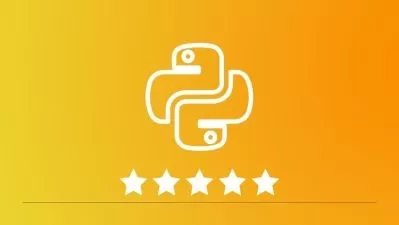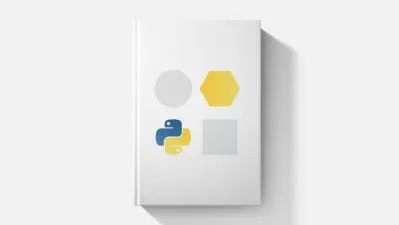Cross Platform Python Setup - Install on Mac, Windows, Linux
Justin Mitchel
4:29:50
Description
Learn how to Install Python 3 on nearly any system (macOS, Windows) and including remote Linux Virtual Machines
What You'll Learn?
- Install Python on nearly operating System
- Using VS Code to use a Virtual-Machine based version of Python
- Install Python on Linux-based with major cloud providers
- Using Virtual Environments to isolate Python
- Using Secure Shells (SSH) to develop on remote systems
Who is this for?
What You Need to Know?
More details
DescriptionPython is one of the most widely used programming languages in the world. In this course, I'll show you exactly how to set it up regardless of what operating system your computer is.
The setup process can be very simple (such as download Python and run it) but it can also start to get rather complex. My goal is to break apart this complexity and put it into manageable chunks that allow you to actually have a solid foundation of how to install Python and actually use it in real projects.
This course is the result of nearly a decade of teaching students around the world how to best setup Python environments and develop applications and automations with Python. Based on feedback, this course will continue to be updated and upgraded to ensure you have the best possible way to set up your Python development environment at your fingertips.
Installing Python is one of the most popular blog posts on my website so I created this course as a comprehensive look at installing Python across multiple machines. My favorite part for more advanced users (just beyond beginner) is using and coding Python with a Virtual Machine along with VSÂ Code.
After finishing this, you will be able to install:
Python 3.5
Python 3.6
Python 3.7
Python 3.8
Python 3.9
Python 3.10
PYthon 3.11
And any other python version that comes out!
Supported Platforms:
macOS
Windows (XP or Later)
Linux
Who this course is for:
- Beginner Python Developers
- Anyone interested in using Python for their Development Environment
- Anyone new to using VS Code with Python
- Anyone interested in configuring Remote Development Environments
- Anyone interested in running Python on a Cloud Provider such as AWS, DigitalOcean, or Linode.
- Anyone wanting to learn how to SSH into a Virtual Machine (AWS EC2, DigitalOcean droplet, Linode Instances)
Python is one of the most widely used programming languages in the world. In this course, I'll show you exactly how to set it up regardless of what operating system your computer is.
The setup process can be very simple (such as download Python and run it) but it can also start to get rather complex. My goal is to break apart this complexity and put it into manageable chunks that allow you to actually have a solid foundation of how to install Python and actually use it in real projects.
This course is the result of nearly a decade of teaching students around the world how to best setup Python environments and develop applications and automations with Python. Based on feedback, this course will continue to be updated and upgraded to ensure you have the best possible way to set up your Python development environment at your fingertips.
Installing Python is one of the most popular blog posts on my website so I created this course as a comprehensive look at installing Python across multiple machines. My favorite part for more advanced users (just beyond beginner) is using and coding Python with a Virtual Machine along with VSÂ Code.
After finishing this, you will be able to install:
Python 3.5
Python 3.6
Python 3.7
Python 3.8
Python 3.9
Python 3.10
PYthon 3.11
And any other python version that comes out!
Supported Platforms:
macOS
Windows (XP or Later)
Linux
Who this course is for:
- Beginner Python Developers
- Anyone interested in using Python for their Development Environment
- Anyone new to using VS Code with Python
- Anyone interested in configuring Remote Development Environments
- Anyone interested in running Python on a Cloud Provider such as AWS, DigitalOcean, or Linode.
- Anyone wanting to learn how to SSH into a Virtual Machine (AWS EC2, DigitalOcean droplet, Linode Instances)
User Reviews
Rating
Justin Mitchel
Instructor's Courses
Udemy
View courses Udemy- language english
- Training sessions 32
- duration 4:29:50
- Release Date 2023/09/10






![Django (Python) Web Framework: The Comprehensive Guide [NEW]](https://traininghub.ir/image/course_pic/38879-x225.webp)




